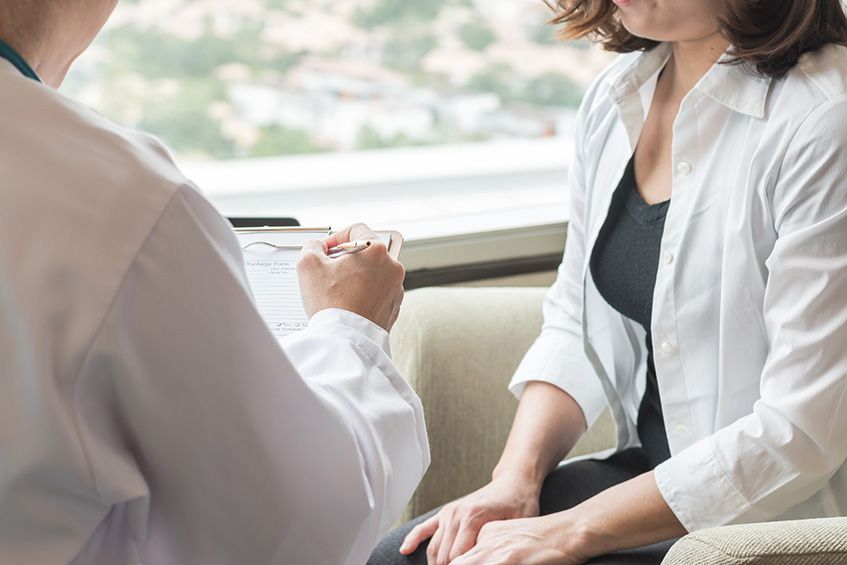Follow-Up Care for Cancer Survivors

After you were diagnosed with cancer, you began a new journey that extends beyond the cancer treatment phase. It’s a new lifelong process of caring for yourself in a new way.
Early in the cancer survivor journey, you had to learn for yourself what normal would look like, and share that with your loved ones. The middle of that journey involved undergoing cancer treatment and dealing with the physical and emotional side effects of it.
Now that you’ve come through treatment, you have the rest of your life ahead of you. You may even experience a sort of “honeymoon phase” that allows your life to be filled with more activities you choose rather than physician appointments. You’re probably feeling like you’re ready to “move on.”
While that’s good, it’s also really important that you tend to your health – both your follow-up care as a cancer survivor as well as remembering to tend to regular health screenings and caring for other health conditions.
Step 1: Have a Cancer Survivorship Plan
Fortunately, most survivors receive a follow-up cancer plan that may include the following: treatment history, treatment team, recommendations for diet and exercise, and late and long-term side effects as a result of their cancer treatment. According to the National Cancer Institute, this plan should be fairly detailed and answer the following questions.
- How long will it take until I feel more like myself?
- Which doctor(s) should I see for my follow-up care?
- How often should I see my doctor(s) for follow-up care?
- What symptoms should I watch out for and consider red flags?
- Are there any long-term health issues I should expect after my cancer treatment?
- What records should I keep about my treatment?
- What specific things can I do to take care of myself to remain as healthy as possible?
If your cancer follow-up plan doesn’t address these or other questions that you may have, make sure to ask your cancer care team.
Step 2: Make and Attend Your Cancer Follow-up Appointments
Every cancer patient is different and follow-up instructions vary accordingly. In general, the frequency of recommended follow-up appointments will depend on the type of cancer you had, the way it was treated, and your overall health. On average, most cancer survivors are instructed to see their oncologist for follow-up appointments every 3 to 4 months for the first 2 to 3 years after treatment, and then once or twice a year. It’s very important to make and keep your follow-up appointments. There is a risk of cancer recurrence. Catching it at a regular follow-up appointment can help with treating it quickly and more effectively.
Regarding Cancer Recurrence
There is no foolproof way to absolutely prevent cancer recurrence. However, according to the American Cancer Society, there are certain actions you can take to be as healthy as possible.
- Eat at least 2½ cups of vegetables and fruits each day
- Limit red meat (beef, pork, lamb) and processed meats (hot dogs, sausage, lunch meats, etc.)
- Consume foods made with whole grains rather than refined grains and sugars
- Lose weight if you are overweight
- Limit alcohol intake to one (women) or two (men) drinks per day
- Participate in regular physical activity
- Return to normal daily activities as soon after cancer treatment as possible
- Try to work up to exercising for at least 150 minutes per week
- Do strength training exercises at least twice per week
It’s also important to note signs of cancer recurrence, such as:
- Return of your original cancer symptoms
- New or unusual pain that doesn’t go away
- Unexplained weight loss
- Easy bleeding or bruising
- New skin lesion or change such as an abnormal rash, etc.
- Chills or fever
- Shortness of breath
- Blood in your stool or urine
- Frequent headaches
- Unexplained lumps, bumps, or swelling
- Nausea, vomiting, diarrhea, appetite loss, or trouble swallowing
- A persistent cough
- Any unusual symptoms that concern you
Step 3: Seek Support from Other Cancer Survivors
Once you’ve battled cancer, it’s understandable that you may experience more anxiety about your health than other people who have never had a serious disease. Being diligent about attending your follow-up oncology appointments can go a long way in relieving some of the worries. But it’s also helpful to get some support between doctor visits. A support group for survivors is a great way to get that
Cancer survivors’ support groups allow you to open up about your fears and anxieties to others who are familiar with your struggles. Realizing you are not alone and gaining strength from fellow survivors will help you transition to life after cancer. Virginia Oncology Associates hosts numerous survivors’ support groups and events year-round at its nine locations.
Click here to read find more VOA cancer survivorship resources.

